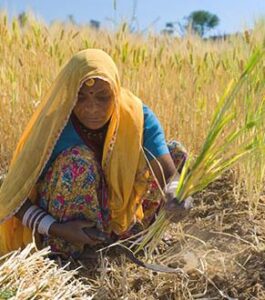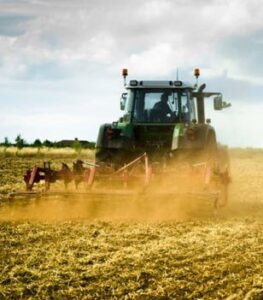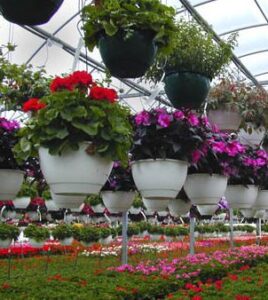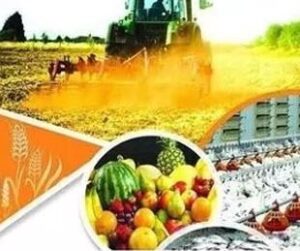Lastest Trends Agriculture : Agriculture is the most important sector for any country. A similar importance is accorded to agriculture in India. More than half of the country’s population is involved in this economy-based sector. The agriculture industry is at the core of India’s economy. It is essential to our livelihood. The importance of Indian agriculture and Indian farmers cannot be overstated. In order to help this sector grow, the Indian government and people take a number of steps. Thus, agriculture has emerged as one of the hottest sectors of the modern economy. There are a number of reasons why agriculture is growing.
Agricultural trends are characterized by new technologies and strategies that become more sophisticated with time. Over the last several decades, the agriculture sector has experienced new changes, as well as the development of new technologies. These factors all contribute to the growth of the sector. As agriculture develops, farmers are able to carry out their farming activities more comfortably and conveniently. In addition to helping agriculture grow, these trends and changes also improve the conditions of farmers.
“The beauty of agriculture is that it is a culture farmer.”
Emerging Trends In Agriculture
As a result of the latest trends in India, the agricultural production of the country has increased. In addition, it has prevented us from becoming a begging bowl for food as a net exporter of agricultural products after independence. A record 291.95 million tonnes of foodgrain are estimated to be produced in the country in 2019-20, according to the Second Advance Estimates. According to the Indian Council of Agricultural Research (ICAR), by 2030, there will be a 345 million tonne increase in food grain demand. As a result of agriculture trends, all of these things are happening. Agricultural developments and technologies have been developing rapidly in Indian agriculture over the past few years.
Keep reading this blog until the end to learn more about these Emerging Trends in Indian Agriculture.
The purpose of this blog is to help you understand agriculture and the latest trends in agriculture. As a result, we begin the blog without wasting any time.
1. Increase Food Production

Since new technologies such as the Green Revolution have been introduced to agriculture practices in India, food production has increased dramatically. The 1970s saw an annual growth rate of 2.08%. Food grains experienced an annual growth rate of 3.5% in 1980. Food grain growth rates like these are a hallmark of the Green Revolution, which helped India become self-sufficient in food grains and even a marginal exporter.
In the 1990s, the annual growth rate fell to 1.7%, almost equal to the annual increase in population. It wasn’t possible to maintain this pace during the 1990s. In 1990-91, there were 176.39 million tonnes of food grains produced. In 2008-09, there were 233.9 million tonnes. Food grain demand is likely to increase in the near future as the population grows and incomes rise.
It is estimated that food grain demand will increase by 2.6% in 2010. The country can export excess food grain to other countries if it maintains a 4% growth rate in agriculture production.
2. Agricultural Diversification

Agricultural production not only meets the demand for food grains, but also meets other development needs. Agriculture has been diversifying in recent years to include commercial and horticultural crops such as fruits, vegetables, spices, cashews, areca nuts, coconuts, dairy products, and animal husbandry.
There is also an increase in demand for these products. Both production and trade have grown in the agricultural sector due to the liberalization of the economy.
3. Emerging Trend in Horticulture Production

It is estimated that India produces the most fruits and vegetables in the world. As a result of India’s diverse geographical, climatic, and soil features, a wide variety of horticultural crops are grown there, including fruits, vegetables, spices, cashew, coconut, cocoa, areca nut, root and tuber crops, medicinal plants, etc.
A total of 63.5 million tonnes of fruits were produced in 2007-08, up from 29.0 million tonnes in 1990-91. Vegetable production has increased from 67.29 million tonnes in 1994-95 to 125.9 million tonnes in 2007-08. Cashew nuts are most commonly produced in India. From 3.7 lakh tonnes in 1991-92 to 6.0 lakh tonnes in 2003-04, cashew production has increased.
4. Raise in Floricultural Output

The flower industry spreads across Karnataka, Tamil Nadu, Andhra Pradesh, and West Bengal at present, covering about 31,000 hectares. The commercial cultivation of floriculture has, however, been gradually increasing since the establishment of liberalization. The demand for Indian cut flowers on the international market is therefore growing continuously.
In 1994-95, the total amount of cut flowers exported was 28.7 crore. It was 96.6 crores in 1998-99. It is expected that India will exceed Rs. 200 crore in floriculture exports by 2010 as a result of the liberalized regime. A total of 0.87 million tonnes of loose flowers and 803.5 million tonnes of cut flowers were produced by the flower industry during 2007-08.
5. Free Trade

Agrarian produce has been allowed to move freely within the country as a result of liberalization. It has contributed to the expansion of agricultural trade, especially in food grains.
6. Agriculture Exports

India exports the most agricultural products in the world. As a result, this is one of the most important emerging trends in agricultural marketing under liberalization. Deregulation is resulting in an increase in agricultural exports under the WTO’s rule and its prospects for growth. As a result of low import costs of inputs, low labour costs, good climatic conditions and low input unit costs, India is in a good position in terms of agricultural exports.
In order for the agriculture sector to grow, agriculture exports are very important. Agricultural operations are also being diversified and employment opportunities are being created.
7. Developing New Biological Techniques

To meet the growing demand for food to feed the growing population, chemical fertilizers and pesticides were applied widely during the Green Revolution. Growing populations, a growing demand for food, and the exploitation of natural resources without limits have put the environment and agriculture at risk.
Biotechnology for agricultural operations is increasingly being used to avoid further damage to the environment and the agriculture sector, and new organic technologies are being developed to avoid further damage.
Agricultural trends such as these increase agricultural production and improve the sector’s conditions. The improvement of employment and farmer conditions are also a result of these trends. They also contribute to the success and growth of agriculture in India in the future.



[…] Read More: Future of Indian Agriculture and Emerging Trends in Agriculture […]
[…] Read More:Future of Indian Agriculture and Emerging Trends in Agriculture […]